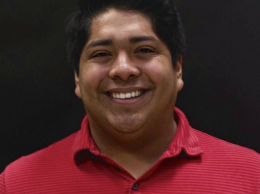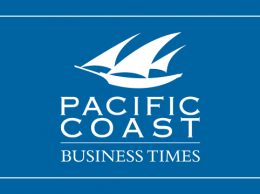New name, new plan for economic growth at Vandenberg
IN THIS ARTICLE
- Central Coast Topic
- Jorge Mercado Author
By Jorge Mercado Friday, June 4th, 2021
People from the private and public sectors believe the newly renamed Vandenberg Space Force Base has the potential to shape the Central Coast economy, and on June 3, those leaders laid out the first phase of their plan.
At the online event, REACH — the Regional Economic Action Coalition, a San Luis Obispo-based economic development nonprofit — discussed the progress it has made, alongside Vandenberg’s 30th Space Wing, the county of Santa Barbara, Cal Poly San Luis Obispo, Deloitte, and the California Governor’s Office of Business and Economic Development, to build Vandenberg Space Force Base into an engine for the local economy.
“We can be a technological leader in one of the most beautiful places on Earth,” said Santa Barbara County Supervisor Joan Hartmann, whose district covers the base and parts of nearby Lompoc.
Formerly known as the Vandenberg Air Force Base, the base was renamed on May 15, to better reflect the base’s focus on military and civilian space launches.
The space industry generates about $400 billion a year, with potential to exceed $1 trillion over the next decade, said Andrew Hackleman, the chief operating officer at REACH.
“Space and that industry face is so important to the future of our nation but also to the state of California … and that is a huge driver for the potential we see,” Hackleman said.
On the Central Coast, the Vandenberg powers 14,000 jobs and generates $4.5 billion annually for Santa Barbara and San Luis Obispo counties, according to a recent study commissioned by REACH and conducted by Cal Poly researchers. Statewide, the base produced 18,000 jobs and $5.8 billion in revenue.
The Space Force base encompasses about 100,000 acres of land, with the potential to grow, said Hackleman. REACH, with the help of its partners, wants to add 2,000 jobs per year over the next decade and generate over $6 billion in economic activity.
“This is just our scenario, but it can grow higher,” Hackleman said.
The plan laid out by REACH during the Zoom event has three big goals for Vandenberg: increasing commercial activity; investing in infrastructure to improve transportation throughout the region; and developing a skilled workforce.
Hackleman said there has already been progress in developing a skilled workforce, as GO-Biz — the Governor’s Office of Business and Economic Development — awarded $30 million to add over 900 jobs in the space industry, some of which will be on the Central Coast.
“The master plan is just a great development opportunity and combines so many of those priorities for California, and it’s a combined effort that will catalyze future investment into the space technology industry here,” said GO-Biz Director Dee Dee Meyers.
According to Meyers, 85% of total venture capital dollars invested in space tech companies go to those headquartered in California.
“This new renaissance in space technologies and the rapid expansion of commercialization here really demonstrates again how well-positioned California is to take advantage of this moment,” Meyers said.
Several other projects are already underway, according to REACH, including structural improvements to Vandenberg’s launch pads and off-base roads.
The plan also calls for supporting more private companies working at the base.
“We’re envisioning space that is more accessible to the community, more accessible to our partners and yet approximate to the launch capability,” said Col. Joe Tringe of Space Launch Delta 30 at Vandenberg.
Cal Poly President Jeffrey Armstrong called the plan a “win-win” that takes advantage of the talent on the Central Coast and at its universities.
According to Armstrong, nearly 500 Cal Poly graduates over the past year went into the aerospace and defense industries. Of those, around 340 stayed in California.
“This is a special part of the world, and it can thrive and grow over the coming decades,” Armstrong said.










